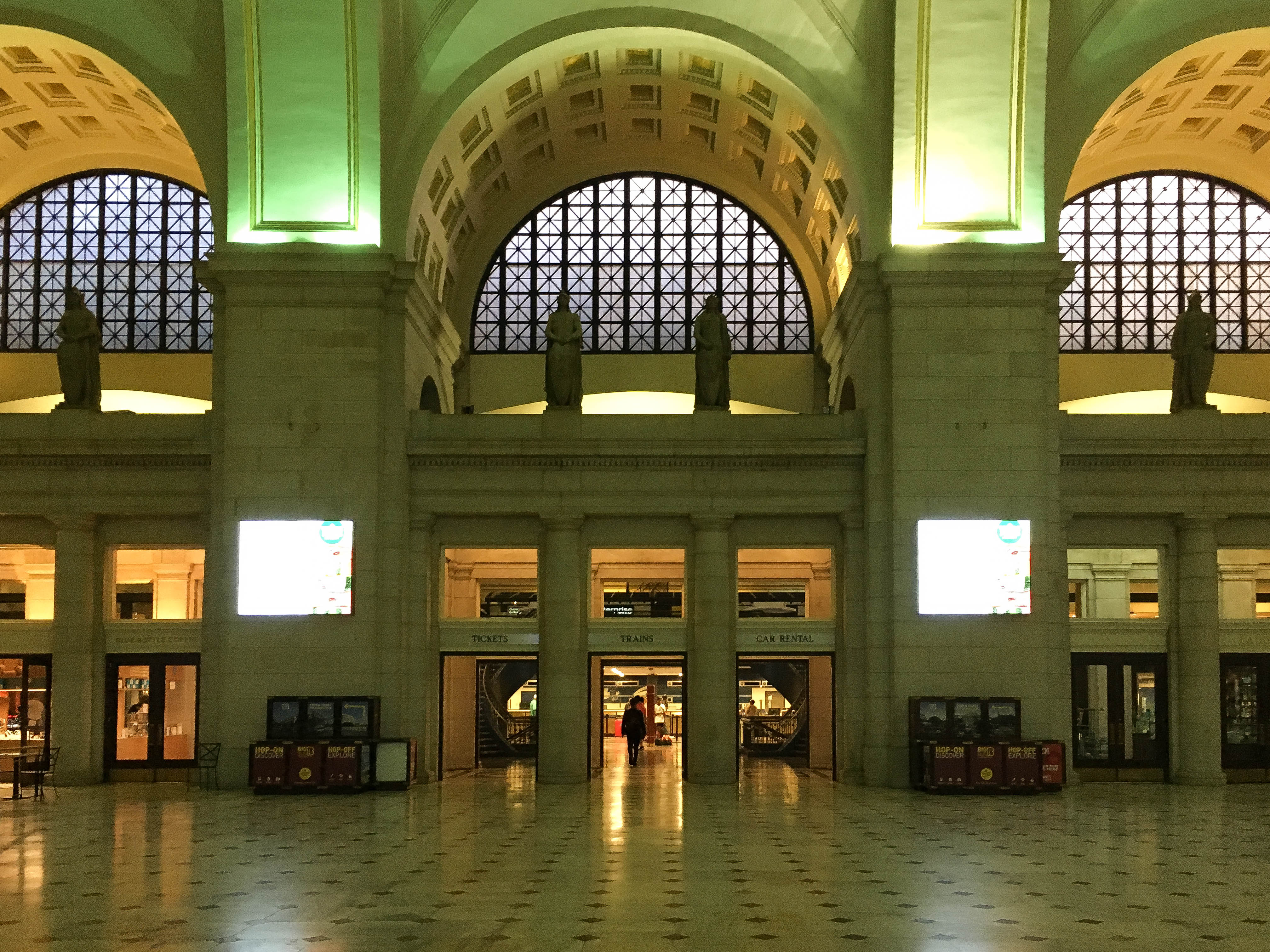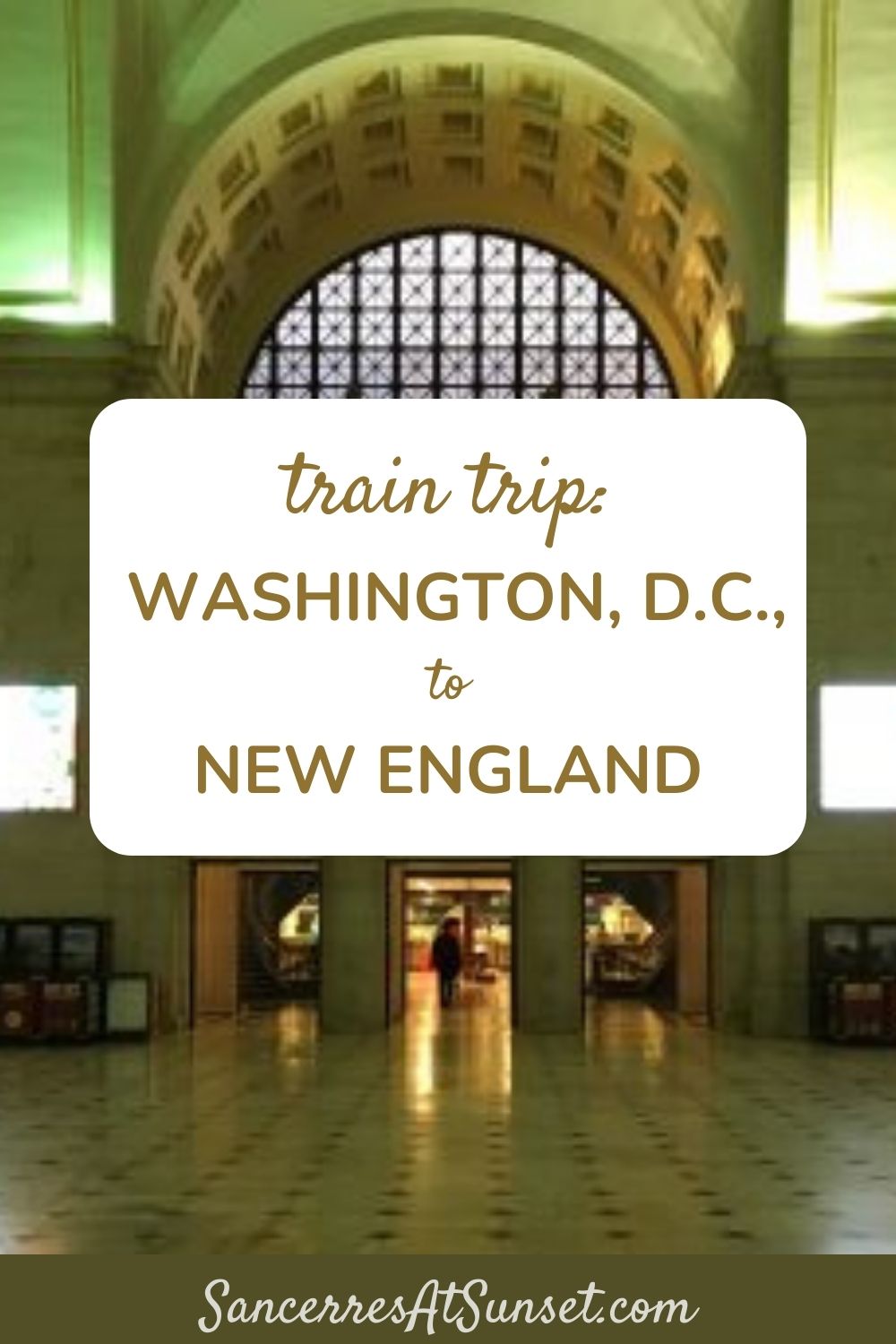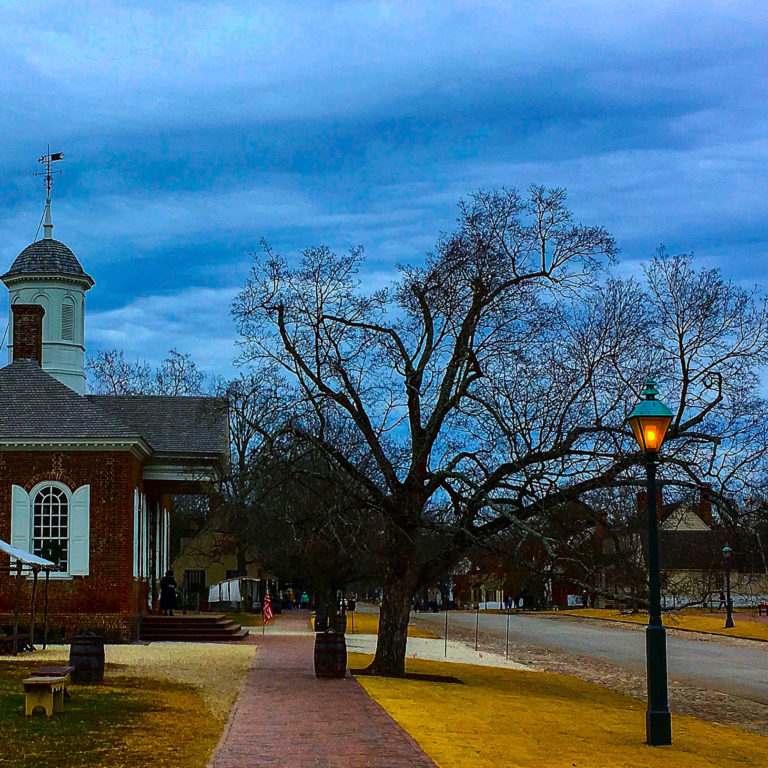Train Trip: Washington, D.C., to New England

It was a train ride not just back home to New England, but really back to a simpler, more civilized time.
I was aboard the Vermonter, Amtrak‘s daily passenger train from Union Station in Washington, D.C., to St. Albans, Vermont, just shy of the Québec border.
This post contains affiliate links. For more information, click here.
I boarded in Washington a little before 7:20 a.m. Seating in Business Class is 1×2, and I was easily able to score a single seat, with a footrest and lots of legroom. The Vermonter has no baggage car, and I stowed my weekend suitcase and laptop backpack on the rack above my seat.
The WiFi was strong enough that I was able to draft a blog post on my Mac.
The café car separated Business Class from Coach and offerred a small selection of lunch-type foods including sandwiches and salads. Business Class passengers also enjoy complementary non-alcoholic beverages; wine, beer, and spirits are available as well.
Best of all, I didn’t have to surrender my Fourth Amendment rights and risk molestation to ride. There is no intrusive security theatre.
I just stepped on board and presented my ticket to the conductor when asked.
As the train chugged toward Vermont, it took me on a partial tour of my own past, as it stopped in so many of the places that have been a part of my life:
The Vermonter is one of America’s classic trains, and the towns it passes through grow ever more charming as it chugs northward.
My aunt picked me up at Brattleboro Station and drove me across the Connecticut River to her home in New Hampshire, as the Vermonter continued northward toward Stowe and Burlington before its final stop at St. Albans, more than 12 hours after leaving Washington, D.C.
I’d ridden it home to New England because my aunt was hosting a house party. Another aunt from Florida was already there.
In time, cousins came from as far away as California. Aunts and uncles drove up from Massachusetts. And my Godfather and his family visited from Norway. I’d sacrificed seeing them on their last visit to America, and regretted it ever since.
We gathered in my aunt’s big backyard and snacked on cold-cut sandwiches and summer salads, sipped wine from Red Sox solo cups, and swapped old family stories — the time my late father caught a ball at Fenway Park, the time my uncle and I cracked each other up with allusions to High Society, the time I slipped and slid across a glacier in Norway (so spectacular that I was reminded of it twice).
The next day, my aunt drove me back to Brattleboro for the ride back to Washington. The train had already made several stops before pulling in to the station a little after 1 p.m., but I was once again able to score a single seat. Too tired to write, I sat and read, and reflected.
Travel matters. It connects us with loved ones, and with ourselves. It exposes us to new places, and to new ideas. It should be elegant, gracious, refined, dignified. It shouldn’t mean subjecting ourselves to being inspected like racehorses, boarded like cattle, and packed like sardines.
I think my favorite form of travel will always be the road trip. But having ridden trains from San Diego to Los Angeles and Paris to Rome, I think they’re a fine choice when driving isn’t feasible. Train travel isn’t perfect, but at its best it can allow us to slow down, to relax, to reflect.
It can be what travel should be.
How to Travel by Train
If you’re used to the hurried indignity of air travel, you might not realize how much simpler it is to take the train. Here’s what you need to know:
Sign up for Amtrak’s Guest Rewards Program
Just like the airlines, Amtrak has a frequent-travel program.
Buy your Tickets
You can purchase tickets via Amtrak’s Web site, by telephone at 1-800-USA-RAIL, or at the station. Be aware though that not all stations are staffed. I always buy my tickets online.
You will need to decide which class of service you want. For shorter distances, your choices are probably Business and Coach. For longer distances, there are also sleeping rooms available with beds and bathrooms. I typically travel in Business Class, which offers roomier seating and complementary soft drinks.
Amtrak offers branded credit cards with perks like extra points for Amtrak purchases, companion coupons, and upgrades.
Go to the Train Station
Some stations are enormous, like Washington’s Union Station, which has shops and restaurants and is so elegant that it holds Inaugural Balls. Others are small, like Brattleboro’s, which has a simple waiting room and friendly staff. Depending on how large your station is, and whether or not you plan to check baggage, I recommend arriving 20-45 minutes before your departure.
Check your baggage, if you can and choose to do so. Some trains have baggage cars; some do not, like the Vermonter. Some stations have baggage handlers; some do not, like Brattleboro. In order for you to check baggage, your train must have a baggage car, and both your departing and arriving stations must have baggage handlers. You can find out whether your train allows checked baggage on Amtrak’s Web site.
If you’re in a large station, consult a departure board to find out at which platform your train should arrive and whether it is on schedule.
Some of the larger stations have lounges for Business Class travellers to wait. Otherwise, wait near the platform. In smaller stations, you can just walk out to the platform a few minutes before the train’s scheduled arrival. In larger stations, you usually have to wait for a station staffer to open doors to the platform.
Board the Train
Find your car and climb aboard. The cars are labelled on the outside with their class of service. Coach passengers on some routes have the option of the Quiet Car, where cell phones, noisy electronics, and unnecessary conversation are not allowed. Business Class passengers tend to be civilized, though occasionally there’s some loud boor on a cell phone. During my trip aboard the Vermonter, two older women boarded in Baltimore and complained loudly that they couldn’t find seats together, until a gentleman arose and moved; fortunately, they disembarked in New York, as I was expecting.
Find an open seat, if you don’t have an assigned one.
Stow your baggage. There are racks above the seats and usually open spaces on the floor for larger luggage.
Once the train is moving, the conductor will usually come around to check your ticket.
Enjoy the Ride
You can bring your own food aboard. There is usually a Café Car with overpriced junk food, a few healthy choices, and both hard and soft drinks.
WiFi is complementary and pretty good.
Sometimes, station stops are longer, and you can get out, stretch your legs, and buy food or reading material at the station. On my trip to Vermont, the stop in New York City lasted 45 minutes.
I recommend wearing nice casual layers and comfortable shoes.
Prepare to Disembark
Listen for the announcement for your stop a few minutes early. Gather up your belongings and move toward the doors. Most station stops last only a couple of minutes. In some cases at smaller stations, the doors on only a couple of cars will open; the conductor will help you find the right place. Climb down to the platform, and be on your way!

After my misspent youth as a wage worker, I’m having so much more fun as a blogger, helping other discerning travellers plan fun and fascinating journeys. Read more …











One Comment